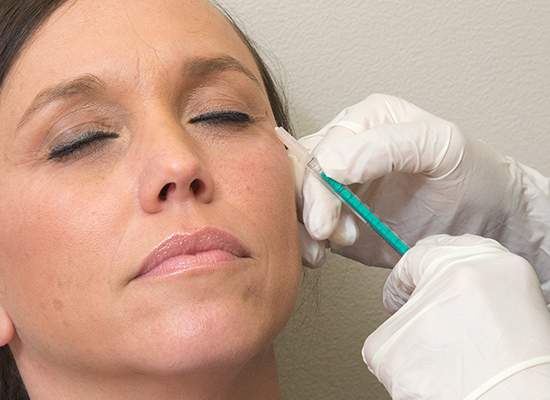We are proud to be a Premier Therapeutic Injection Center providing a full spectrum of on-site treatment services for patients who are diagnosed with Neurologic Disorders such as Cervical Dystonia, Chronic Migraine, Blepharospasm, Hemifacial Spasm, Spasticity (post stroke, MS related, Cerebral Palsy and Spinal Cord Injury), Masseter Dystonia, Sialorrhea or Hyperhidrosis.
Dr. Martinez and his Advance Practitioners can recommend a complete treatment plan for each patient based on their individual diagnosis, medical history, current symptoms and health plan payer policy guidelines.
Our authorization team, led by Ann Marie Wine, has extensive experience with the reimbursement process, working with specialty pharmacies to get product delivered in a timely fashion.
Allergan (www.PatientSavingsProgram.com ) and Merz (www.XeominPatientSavings.com ) Patient Access programs can help with out-of-pocket costs, as well as Patient Assistance programs dedicated to helping qualified patients receive the treatment they need. We are proud to say that she has created an efficiency model emulated across the country.
Conditions Commonly Treatment with Botox or Xeomin
Cervical Dystonia/Spasmodic Torticollis
Dystonia is the name for a particular nerve disorder which causes muscles to contract and spasm on their own. Cervical dystonia is a condition that causes neck muscles to tighten or spasm without your control. Other terms used to describe cervical dystonia include spasmodic torticollis and torticollis.
Common signs and symptoms of Cervical Dystonia may include any combination of the following:
- Muscle spasms or tightness
- Neck pain (reported in up to 91% of cases)
- Uncomfortable pulling of muscles in the neck or shifting of the head to one side
- Decreased range of motion or rotation of the head or neck
- Symptoms that worsen during the first 5 years
- Head tremors
Focal Spasticity
Focal Upper/Lower Limb Spasticity can result from several conditions, including:
Stroke
A stroke can damage small parts of a person’s brain, resulting in speech and/or vision problems and movement problems such as paralysis. Focal upper/lower limb spasticity may develop weeks, or even months, after the incident. These issues usually present within a year after the stroke.
Multiple Sclerosis (MS):
In MS, the cover of the nerve cell fibers in the brain and spinal cord, called the myelin sheath, gradually wears away. As a result, patients can experience loss of movement, pain and focal upper/lower limb spasticity. MS symptoms can worsen and improve in cycles.
Adult Cerebral Palsy:
The symptoms of cerebral palsy appear in childhood and can persist in adults, affecting movement and coordination. It is not the result of damaged muscles or nerves, but rather problems in the part of the brain that controls muscle movements. As with stroke, the damaged part of the brain can also cause reduced arm/leg function associated with focal upper/lower limb spasticity.
Traumatic Brain Injury (TBI)
Focal upper/lower Limb spasticity can occur within days of the injury due to the extreme stress of a violent impact or skull fracture.
Spinal Cord Injury (SCI)
After SCI, the nerve cells controlling muscle activities below the injury become disconnected from the brain. As a result, focal upper/lower limb spasticity is common after trauma to the spinal cord.
Focal Upper/Lower Limb Spasticity can occur/present as a:
- Flexed Elbow/wrist, Clenched fist/fingers or thumb in palm
- Bent wrist
- Closed fist
- Tight arm twisting against the chest
- Stiffening or tightening of the wrist and/or thumb
- “Catching” feeling in the arm during a quick movement
- Flexed toes and ankles
- When dressing/putting on shoes or socks
- Handling objects to perform household tasks
- During hygiene
- Gait/ambulation
Blepharospasm
Blepharospasm is a muscle disorder that causes involuntary spasms of the muscles around your eye. These spasms can result in excessive blinking, eye twitching, or closing of your eyelids. This can impair vision and make everyday tasks such as driving or using a computer difficult.
Symptoms of Blepharospasm
- Dry eyes or watering eyes
- Light sensitivity
- Increased blinking
- Eye pain
- Soreness
- Irritation and discomfort of the eyelids
- Frequent eye movements

Chronic Migraine (Botox® only)
If you are suffering from Chronic Migraine, you are experiencing 15 or more headache days per month with headaches lasting 4 hours or longer. Chronic Migraine can also be associated with some of the following symptoms and triggers:
Signs & Symptoms
- Nausea and/or vomiting
- Photophobia-sensitivity to light
- Phonophobia-sensitivity to sound
- Vision changes (Aura)
- Hearing changes (Aura)
- Acute smell (Aura)
- Vertigo/dizziness
Common Triggers
- Physical activity or exertion
- Stress
- Hormonal changes
- Skipping meals
- Sleep disturbances or sleeping late
- Weather changes
- Perfume or strange odors
- Neck pain
- Lights
- Alcohol
- Smoke
- Heat
- Food/diet
